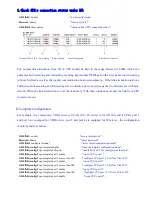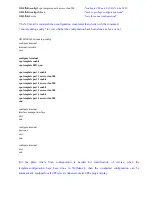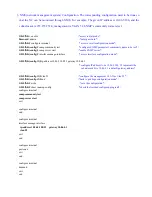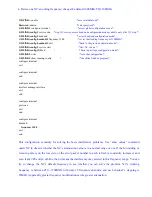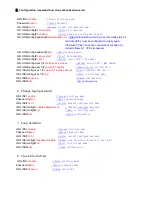
4. Revise one NC’s working frequency, change the default 1000MHz TO 1100MHz.
GD.LINK>
enable /
/*access initial mode*/
Password
: admin
/*enter password*/
GD.LINK#
configure terminal .
/*access global configuration mode*/
GD.LINK(config)#
service stop
/*stop NC service, access head-end configuration mode available only after NC stop */
GD.LINK(config)#
headend
/*access head-end configuration mode*/
GD.LINK(config-headend)#
frequency 1100
/*revise the working frequency as 1100MHz*/
GD.LINK(config-headend)#
exit
/*back to the previous operation mode*/
GD.LINK(config)#
service start
/*start NC service*/
GD.LINK(config-if)#
end /
/*back to privilege configuration mode*/
GD.LINK#
write
/*save the configuration*/
GD.LINK#
show running-config /
/*check the finished program*/
configure terminal
exit
configure terminal
end
configure terminal
interface manage-interface
exit
end
configure terminal
port coax
exit
end
configure terminal
headend
frequency 1100
exit
end
This configuration is mainly for solving the basic interference problems. Use “show online” command
under NC to observe whether the NC’s attenuation value is in a normal range or not. If the forwarding or
receiving rate is on the low side, or the error packet number in each refresh is constantly increased, and
even leads CPEs often off-line, then it means the interference may existed in this frequency range. You can
try to change the NC’s default frequency to see whether you can solve the problem. NC’s working
frequency is between 950 ~1500MHz with total 23 frequency channels, and each channel’ s stepping is
25MHz. Apparently greater frequency modification occurs greater attenuation.


